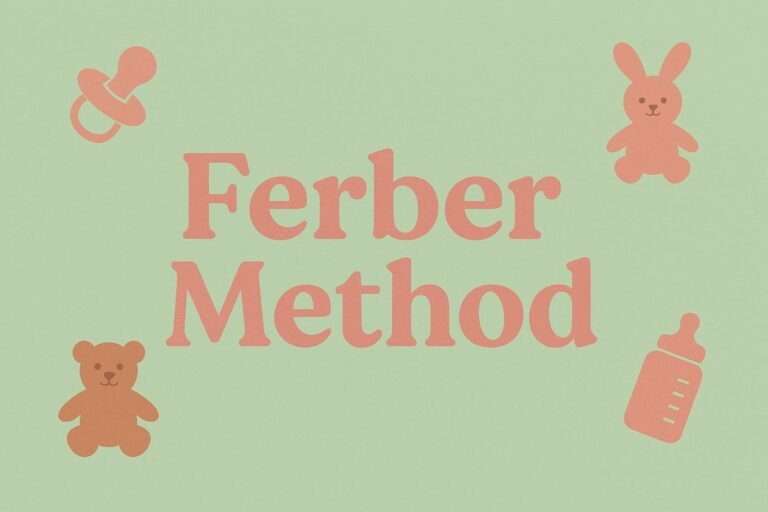In the ever-evolving landscape of parenting philosophies, attachment parenting stands out as an approach that emphasizes the importance of strong emotional bonds between parents and children. As a mom of two boys with 12 years of parenting experience, I’ve navigated the complex world of raising children while balancing different parenting approaches.
Whether you’re a new parent curious about attachment parenting or a seasoned caregiver looking to refine your approach, understanding the principles and practices of this parenting style can provide valuable insights for your family’s journey.
Attachment parenting has gained significant attention in recent years, with many parents drawn to its focus on responsiveness and connection.
Throughout this guide, we’ll explore what attachment parenting really means, how it differs from other parenting approaches, and what practical ways you can use to implement its principles in your daily life. We’ll also examine both the benefits and challenges of this parenting style, helping you develop a balanced approach that works for your unique family situation.
Join me as we dive into the world of attachment parenting – from its scientific foundations to real-life applications – and discover how you can foster secure, loving relationships with your children while maintaining your own well-being as a parent.
Table of Contents
What Is Attachment Parenting?
Attachment parenting is a parenting style that emphasizes physical and emotional closeness between parents and children to foster secure attachment and healthy development. This approach, popularized by pediatrician William Sears and his wife Martha Sears in the 1980s, focuses on responding sensitively to children’s needs and building strong parent-child bonds from infancy.
Although attachment parenting isn’t classified as one of the four main parenting styles (authoritative, authoritarian, permissive, and uninvolved), it has gained significant traction among parents worldwide. While many parents incorporate elements of attachment parenting into their childrearing approach, there is limited comprehensive data on exactly how many families specifically identify with or practice attachment parenting in its entirety.
What we do know is that certain attachment parenting practices have become increasingly common in recent decades, with practices like skin-to-skin contact after birth now routinely encouraged in many hospitals.
The Science Behind Attachment Parenting
The attachment parenting style draws from attachment theory, developed by psychiatrist John Bowlby and expanded by psychologist Mary Ainsworth in the mid-20th century. This theory suggests that infants are biologically programmed to seek proximity to their caregivers for protection and comfort, and the quality of these early attachments affects emotional and social development throughout life.
Research from the Study of Early Child Care and Youth Development of the National Institute of Child Health and Human Development (NICHD) found that secure attachment in early childhood is associated with better social competence with peers in later childhood. A meta-analysis of these findings showed a significant association between attachment security and children’s peer competence .
The biological basis for attachment parenting is supported by studies on the hormone oxytocin, often called the bonding hormone. Research published in Psychoneuroendocrinology shows that skin-to-skin contact, breastfeeding, and responsive caregiving increase oxytocin levels in both the parent and the child, facilitating emotional bonding.
Attachment Parenting vs Secure Attachment
While related, attachment parenting and secure attachment are distinct concepts that are sometimes confused.
Similarities:
- Both emphasize the importance of parent-child emotional bonds.
- Both recognize responsiveness to children’s needs as crucial.
- Both aim to promote healthy emotional development.
- Both value consistent, loving care from parents.
- Both can lead to confident, emotionally healthy children.
Differences:
- Secure attachment is a psychological outcome (the child’s bond with caregivers), while attachment parenting is a set of practices.
- Secure attachment can develop through various parenting approaches, not exclusively through attachment parenting.
- Attachment parenting prescribes specific practices (like co-sleeping), while secure attachment focuses on the quality of responsiveness.
- Secure attachment is evidence-based and universally recognized in developmental psychology, while attachment parenting contains both evidence-based and preference-based components.
- Secure attachment is measured through standardized assessments, while attachment parenting is defined by parental behaviors.
Attachment Parenting vs Gentle Parenting
Attachment parenting and gentle parenting share common philosophies but differ in their specific focus and practices.
Similarities:
- Both emphasize respect for the child as an individual.
- Both avoid harsh discipline methods.
- Both prioritize understanding the child’s emotional needs.
- Both focus on building strong parent-child relationships.
- Both reject rigid scheduling in favor of responsiveness.
Differences:
- Attachment parenting emphasizes physical closeness more heavily through practices such as babywearing, co-sleeping, etc.
- Gentle parenting places greater emphasis on positive discipline techniques.
- Attachment parenting has more specific guidelines (the 8 principles explained below), while gentle parenting is broader.
- Gentle parenting often extends its principles to older children, while attachment parenting was originally more focused on infants and toddlers.
- Attachment parenting was developed specifically by Dr. Sears, while gentle parenting draws from multiple parenting philosophies.
Attachment parenting offers a framework for nurturing close bonds with your child, but it’s important to recognize that secure attachment can develop through various approaches. The key is consistently responding to your child’s needs with sensitivity rather than perfectly following a specific set of practices.
The 8 Principles of Attachment Parenting

Attachment parenting is guided by 8 core principles, often referred to as the Baby B’s, developed by Dr. William Sears. These principles serve as a compass rather than rigid rules, allowing parents to adapt them to their family’s unique circumstances.
The 8 Baby B’s are:
1. Birth Bonding
The first moments and days after birth provide a critical window for establishing connection with your newborn. This principle emphasizes skin-to-skin contact immediately after birth when possible, minimizing separation between the mother and the baby, and creating a peaceful environment for getting acquainted.
Research from the Cleveland Clinic shows that immediate skin-to-skin contact, referred to as kangaroo care, after birth can help regulate a newborn’s temperature, heart rate, and breathing while promoting successful breastfeeding initiation.
2. Breastfeeding
Breastfeeding is viewed as more than just nutrition in attachment parenting – it’s an opportunity for physical and emotional connection. This principle encourages breastfeeding on cue rather than on a schedule, and for an extended period when possible.
The World Health Organization (WHO) recommends exclusive breastfeeding for the first 6 months of life, with continued breastfeeding alongside appropriate complementary foods up to 2 years or beyond.
3. Babywearing
Carrying your baby close to your body in a sling or carrier allows for continued physical contact while giving you the freedom to move around and accomplish daily tasks. Babywearing helps infants feel secure while observing and participating in your activities.
A study published in Pediatrics found that infants who were carried more (in arms or carriers) cried and fussed 43% less overall than non-carried babies.
4. Bedding Close to Baby (Co-Sleeping)
This principle involves keeping your baby close during nighttime sleep, whether through room-sharing, co-sleeping, or bedsharing (following safety guidelines). Proximity during sleep helps with nighttime parenting and can make breastfeeding easier.
The American Academy of Pediatrics (AAP) recommends room-sharing for at least the first 6 months, while emphasizing safety considerations for bedsharing.
5. Belief in Baby’s Cry
Attachment parenting views crying as communication, not manipulation. This principle encourages parents to respond promptly to their baby’s cries and work to understand what they’re trying to express, rather than letting babies cry it out.
Research from the Center on the Developing Child at Harvard University suggests that consistently responding to infant cries helps develop the neural pathways for emotional regulation and secure attachment.
6. Beware of Baby Trainers
This principle cautions against rigid advice that contradicts parents’ instincts or disregards the unique needs of individual babies. It encourages parents to be critical consumers of parenting advice and to trust their knowledge of their own child.
7. Balance and Boundaries
Maintaining your own well-being as a parent is essential for practicing attachment parenting successfully. This principle acknowledges the importance of meeting your needs alongside your child’s needs and setting appropriate boundaries.
A study published in Frontiers in Psychology found that parental burnout affects 5-8% of parents in Western countries, highlighting the importance of self-care in parenting approaches.
8. Be Prepared for Criticism
Parents practicing attachment parenting may face criticism from family, friends, or even strangers. This principle encourages parents to be confident in their choices and to build a supportive community that respects their parenting approach.
The principles of attachment parenting provide a framework that many parents find helpful, but it’s important to adapt them to your family’s unique situation. The core message is responsiveness to your baby’s needs rather than rigid adherence to specific practices.
5 Real-Life Examples of Attachment Parenting
Understanding attachment parenting in practice can be helpful for parents considering this approach.
Here are 5 real-life examples that illustrate how different families implement attachment parenting principles in ways that work for their unique situations:
1. The Work-from-Home Dad Who Babywears
Michael, a freelance graphic designer and father of 10-month-old Emma, uses babywearing to maintain connection while working from home. He keeps Emma in a structured carrier on his chest during client calls and design work, occasionally switching to a back carry when he needs more mobility. Michael sees babywearing as a game-changer. Emma stays calm and engaged watching what he’s doing, while he can still meet his deadlines while keeping her close. When she falls asleep against his chest, he can feel her breathing, and it’s this incredible bonding moment even while he’s working.
2. The Responsive Nighttime Parent
Sophia practices responsive nighttime parenting with her toddler Ethan by room-sharing with a sidecar crib attached to her bed. When Ethan stirs at night, she can quickly respond without either of them fully waking. Before trying this arrangement, Sophia was always exhausted from getting up multiple times and walking to Ethan’s room. Now she can respond to her son’s needs with minimal disruption to either of their sleep. Sometimes just a reassuring hand on his back is all he needs to settle back down, and other times he nurses briefly before returning to sleep.
3. The Attachment-Focused Adoptive Family
The Johnsons adopted 3-year-old Jessy after she had spent her early years in institutional care. To help Jessy develop secure attachment, they implemented specialized attachment parenting strategies. They created what they call Jessy time – 20 minutes of undivided attention each day where Jessy leads the play and they follow. The parents also made physical touch a priority through gentle hugs, carrying Jessy when possible, and always asking permission before touching. After 18 months, they’ve seen remarkable progress in her ability to trust them and express her needs.
4. The Gentle-Weaning Mother
Leila practiced child-led weaning with her son Omar, who continued breastfeeding until age 3. Leila never planned to breastfeed that long, but it felt right for both of them. As Omar grew, nursing became less about nutrition and more about connection – a quick way to reconnect after preschool or comfort after a fall. When he was ready, the weaning process happened gradually and naturally, with their bedtime nursing session being the last to go. They replaced it with extra cuddling time while reading stories, maintaining that special connection in a new way.
5. The Emotionally Attuned Co-Parents
Despite their divorce, Javier and Carmen prioritize attachment-focused co-parenting for their 6-year-old daughter Lucia. They maintain consistent responsiveness across both households through regular communication about Lucia’s emotional needs. They have a shared journal that travels with Lucia between homes, where they write down significant moments, emotional breakthroughs, or concerns so the other parent can maintain continuity. Both parents practice peaceful discipline methods and prioritize Lucia’s emotional security during transitions. It’s not always easy, but seeing how confident and emotionally expressive she is makes it worth the effort.
These examples demonstrate that attachment parenting looks different for every family. However, the core remains the same guided by the principle of responding sensitively to children’s needs and fostering secure emotional bonds. Meanwhile, the specific practices adapt to each family’s circumstances, values, and children’s temperaments.
Attachment Parenting Pros and Cons
Like any parenting approach, attachment parenting comes with both advantages and challenges. Understanding these can help you make informed decisions about which aspects might work best for your family situation.
Pros
Attachment parenting offers several potential benefits for both children and parents including:
- Promotes secure attachment: Research suggests that responsive parenting is associated with secure attachment in children, which contributes to better emotional regulation and social skills.
- Enhances parent-child communication: Close physical proximity helps parents become attuned to their baby’s cues and needs.
- May support cognitive development: Studies indicate that secure attachment is linked to better problem-solving abilities and academic outcomes.
- Could reduce crying and fussiness: As mentioned, research found that infants who were carried more cried 43% less than other babies.
- Encourages parental confidence: Relying on intuition and responsiveness often helps parents feel more confident in their caregiving abilities.
- Potentially easier nighttime parenting: Proximity during sleep can make nighttime care less disruptive for both parent and child.
- Supports breastfeeding relationship: The emphasis on responsiveness aligns well with on-demand breastfeeding, potentially supporting longer breastfeeding duration
Cons
Potential challenges associated with attachment parenting include:
- Risk of parental burnout: The intensive nature of attachment parenting can be exhausting without adequate support systems.
- Possible sleep deprivation: Some parents find their sleep quality suffers with co-sleeping arrangements.
- Partner relationship strain: The focus on the parent-child bond sometimes leaves less energy for nurturing the partner relationship.
- Logistical challenges: Practices like babywearing and breastfeeding may be difficult to maintain for working parents.
- Social pressure and criticism: Parents may face judgment from family members or friends who favor different parenting approaches.
- Potential for overdependence: Without balanced implementation, some children might struggle with independence as they grow.
- May be culturally misaligned: Some attachment practices conflict with cultural expectations in certain communities.
Ultimately, the effectiveness of the attachment parenting style depends on how it’s implemented and whether it aligns with your family dynamics and child character. Many families adopt a hybrid approach, incorporating attachment principles that work for them while leaving aside those that don’t fit their situation.
Developing a Balanced Approach to Parenting: 5 Practical Tips
Finding balance is essential when incorporating attachment parenting principles.
Here are 5 practical tips for developing an approach that nurtures your child while sustaining your well-being as a parent:
1. Customize Attachment Practices to Your Family’s Needs
Attachment parenting isn’t an all-or-nothing proposition. Select the practices that resonate with your family values and lifestyle and adapt them to fit your unique circumstances. If bedsharing doesn’t work for you, perhaps room-sharing with a bassinet beside your bed provides the closeness you’re seeking. If babywearing for hours causes you back pain, shorter wearing sessions combined with floor play might be your balance point.
2. Prioritize Your Self-Care
Responsive parenting requires emotional and physical energy, making self-care essential rather than optional. Schedule brief self-care moments throughout your day – 5 minutes of deep breathing, a quick shower, or stepping outside for fresh air. Just 10 minutes of mindfulness practice can significantly reduce stress levels in parents for the benefit of the entire family.
3. Create a Support Network (Build Your Village)
Build connections with like-minded parents who understand and support your parenting approach. Online communities, local parenting groups, or even a trusted friend can provide emotional support, practical advice, and occasional childcare help. Social support significantly reduces parenting stress: It takes a village to raise a child.
4. Establish Healthy Boundaries
Responsive parenting doesn’t mean sacrificing all boundaries. Teaching children about appropriate boundaries actually helps them develop emotional intelligence and respect for others. Start small – perhaps by explaining that you need 5 minutes to finish a task before reading a book together, or designating certain items as not for children to touch. Consistency and clear, age-appropriate explanations make boundaries easier for children to understand and accept.
5. Evolve Your Approach as Your Child Grows
Attachment parenting naturally transforms as your child develops. The physical closeness of infancy gradually shifts toward emotional availability and guidance as children grow more independent. Follow your child’s lead – some children naturally seek more independence early, while others need close connection for longer periods. The goal is to maintain a secure emotional base while encouraging age-appropriate autonomy.
Developing a balanced approach to parenting means honoring both your child’s needs and your own. The most sustainable parenting style is one that nurtures your child’s development while allowing you to thrive as an individual and as a parent. Remember that perfection isn’t the goal – consistency, responsiveness, and love are what truly matter.
Disclosure: This post contains affiliate links. As an Amazon Associate, I earn from qualifying purchases. I may earn a commission if you click and make a purchase, at no extra cost to you.
5 Best Attachment Parenting Books

Deepening your understanding of attachment parenting through well-researched books can provide valuable insights and practical guidance.
Following are 5 essential parenting books for those of you interested in this approach:
1. The Attachment Parenting Book by William Sears, MD and Martha Sears, RN
Written by the pioneers who popularized attachment parenting, this comprehensive guide outlines the core principles and practices of this parenting approach. The Sears provide the scientific rationale behind attachment parenting while offering practical advice for implementation in daily life. What makes The Attachment Parenting Book stand out is its balanced perspective from both a pediatrician and a nurse-mother of 8 children, combining medical knowledge with real-world parenting experience.
2. The Continuum Concept by Jean Liedloff
This influential book explores how indigenous child-rearing practices in Venezuela support secure attachment and confident children. Liedloff’s observations of the Yequana people revealed parenting patterns that naturally foster independence through a foundation of secure attachment. What distinguishes The Continuum Concept is its anthropological perspective, challenging Western assumptions about child development by showcasing a culture where attachment parenting principles occur naturally, resulting in remarkably happy, confident children.
3. Attached at the Heart by Barbara Nicholson and Lysa Parker
Written by the founders of Attachment Parenting International, this evidence-based guide connects attachment theory with practical parenting strategies. The authors present extensive research supporting responsive parenting while addressing common challenges families face. Attached at the Heart stands out for its accessible explanation of the scientific research behind attachment parenting and its inclusion of real-life stories from diverse families, making the principles relatable and applicable to various situations.
4. The Attachment Connection by Ruth Newton, PhD
This insightful book focuses specifically on how to raise a secure child using attachment theory principles. Dr. Newton, a clinical psychologist, bridges the gap between attachment research and everyday parenting with clear, actionable guidance. What makes The Attachment Connection unique is its clinical perspective on building secure attachment, with specific strategies for different developmental stages from infancy through early childhood and special attention to challenging situations.
Related: How to Raise a Confident Child: Expert Roundup
5. Sweet Sleep: Nighttime and Naptime Strategies for the Breastfeeding Family by La Leche League International
This comprehensive resource addresses one of the most challenging aspects of attachment parenting: nighttime parenting and sleep arrangements. Written by breastfeeding and parenting experts, the book provides evidence-based information on safe co-sleeping and responsive nighttime parenting. The unique contribution of Sweet Sleep: Nighttime and Naptime Strategies for the Breastfeeding Family is the focus on the biological normalcy of nighttime breastfeeding and proximity, along with specific safety guidelines and troubleshooting advice for various sleep challenges families might encounter.
These books offer diverse perspectives on attachment parenting – from its foundational concepts to practical applications in specific areas like sleep and emotional development. Whether you’re new to attachment parenting or looking to deepen your practice, these resources provide valuable insights based on both research and real-world experience.
Final Thoughts
Attachment parenting offers a framework for building strong emotional connections with your child through responsive, attuned caregiving. Throughout this guide, we’ve explored the principles, practical applications, benefits, and challenges of this parenting approach. What’s most important to remember is that attachment parenting isn’t about following a rigid set of rules; instead, it’s about understanding your child’s needs and responding with sensitivity within the context of your unique family situation.
The research consistently shows that secure attachment provides children with a strong foundation for emotional well-being and healthy development. However, there are many paths to building secure attachment, and attachment parenting practices represent just one approach. The essence of effective parenting lies not in perfectly implementing specific techniques, but in consistently showing up for your child with love, attention, and responsiveness.
As you navigate your parenting journey, I encourage you to take what resonates from attachment parenting while giving yourself grace when certain practices don’t work for your family. Balance is key – honoring your child’s needs while also caring for your own and your partner’s well-being creates a sustainable approach to parenting that benefits everyone.
What has your experience been with attachment parenting? Have you incorporated any of these principles into your parenting approach? What challenges have you faced, and what strategies have worked well for your family? Sharing our stories and insights helps create a supportive community – our virtual village – where we can learn from one another’s experiences. Other parents and I would love to hear your thoughts in the comments below!







